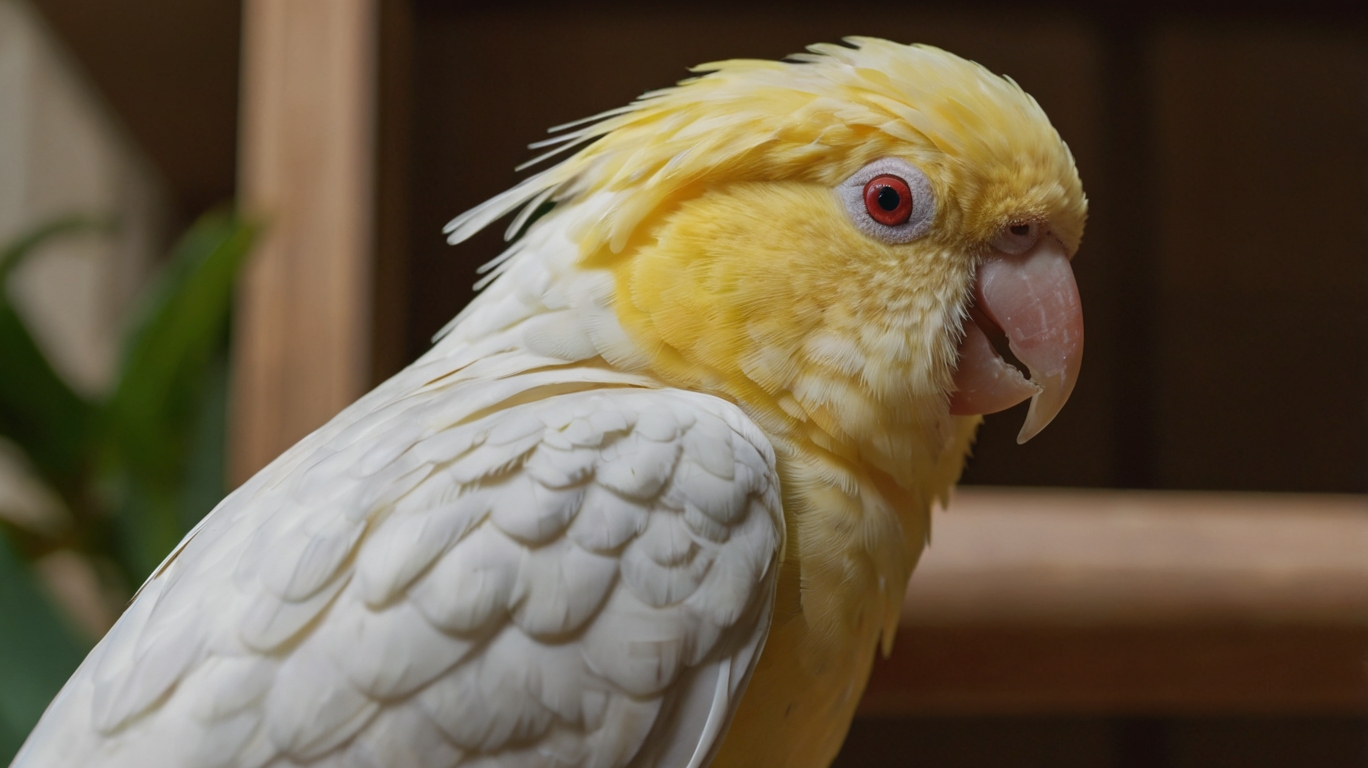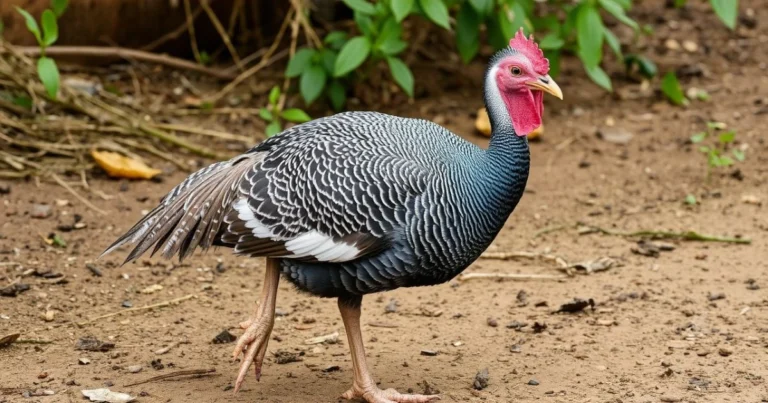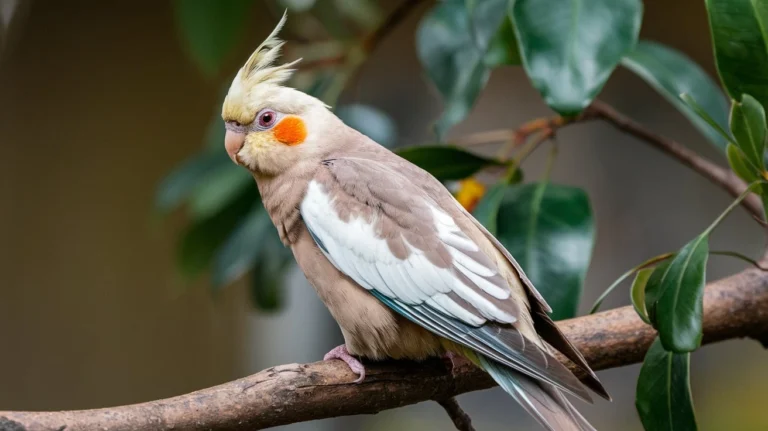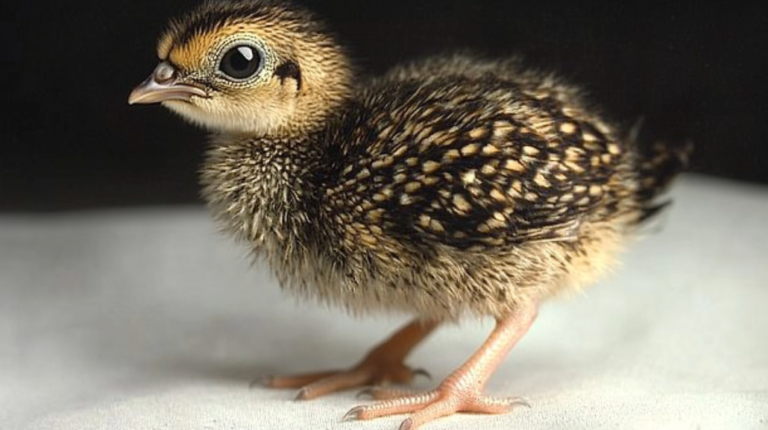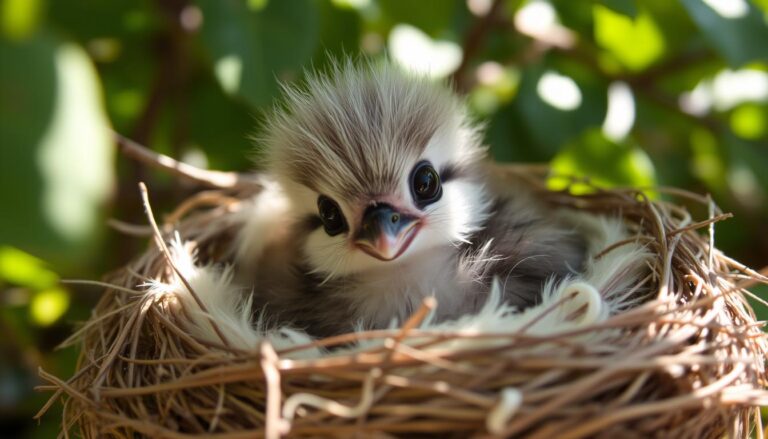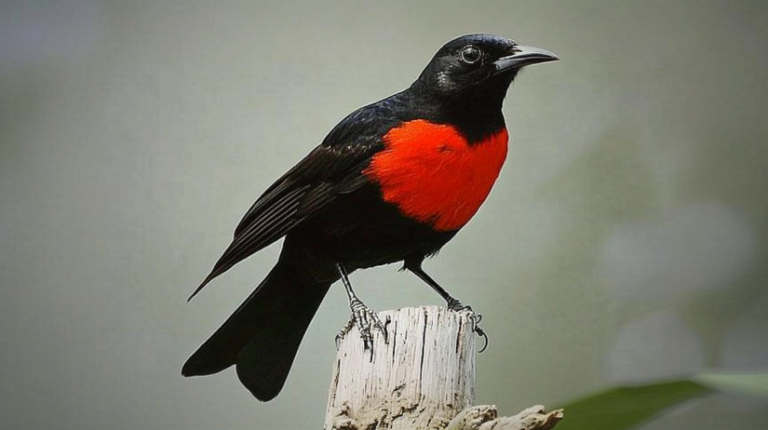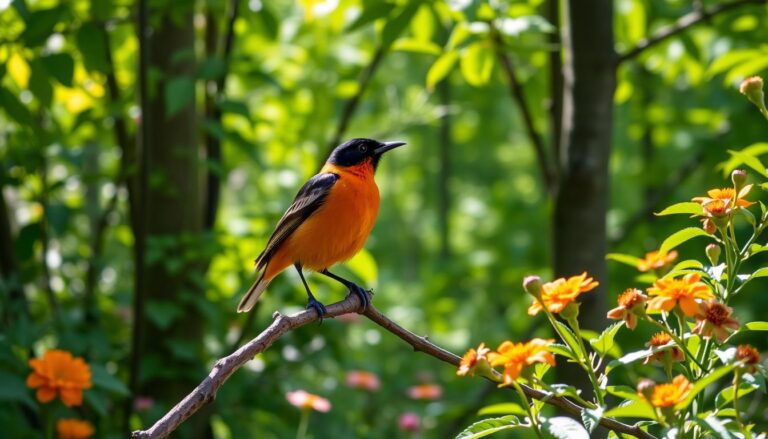Lutino Pearl Cockatiel: 7 Incredible Reasons This Stunning Bird Brightens Your Life
Introduction
Have you ever laid eyes on a small, feathered wonder that makes your heart skip a beat? Maybe you’ve heard soft chirps from across the room and felt an instant urge to meet the source of those curious sounds. If so, you might already be under the spell of a lutino pearl cockatiel—a bundle of sunshine and personality that has captured the hearts of countless bird lovers. In this playful exploration, we’ll dive into the colorful world of the lutino pearl cockatiel, discover why they’re a top pick for first-time parrot owners, and learn the science behind those radiant, speckled feathers.
Welcoming a lutino pearl cockatiel into your life can bring laughter, companionship, and a bit of feathery drama, too. These bright-yellow showstoppers aren’t just lookers; they’re incredibly affectionate and surprisingly intelligent. In the following sections, you’ll uncover everything you need to know about caring for and bonding with your new avian companion. By the end, you’ll be armed with expert insights, ready to provide a warm, loving environment for your lutino pearl cockatiel. Let’s dig in!
The Beauty Behind the Feathers
What Exactly Is a Lutino Pearl Cockatiel?
At first glance, a lutino pearl cockatiel looks like a tiny burst of sunshine perched on your shoulder. These birds belong to the cockatiel species (Nymphicus hollandicus), which is native to Australia’s semiarid regions (source: Australian Government – Department of Climate Change, Energy, the Environment and Water). The “lutino” aspect refers to a genetic mutation that strips away most of the bird’s gray or darker pigments, leaving behind predominantly yellow and white feathers.
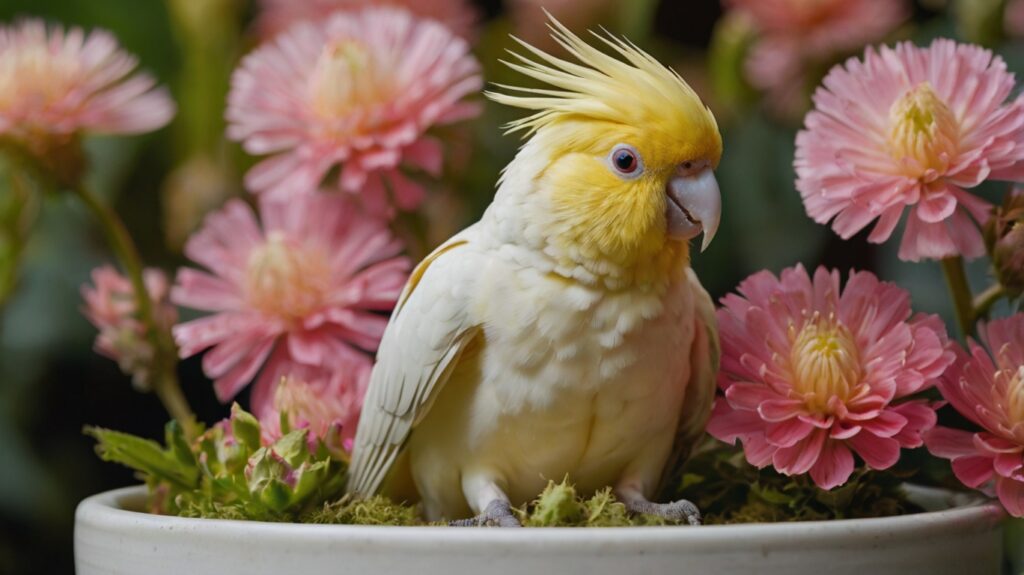
The “pearl” part describes a pretty pattern sprinkled across the wings, featuring pale yellow “lacy” spots. Imagine a tapestry of sunlight woven into soft feathers—each pearl marking adds to the bird’s visual charm. When you combine these traits, you get the lutino pearl cockatiel: a bright-yellow, polka-dotted parakeet-like bird that seems plucked straight out of a tropical fairytale.
A Quick Genetics Lesson
Although it might sound complicated, the genetics of the lutino pearl cockatiel revolve around recessive mutations. Lutino coloring is a sex-linked recessive gene, which means only birds with two copies of this gene (on the correct chromosome) exhibit the trademark bright-yellow plumage. The “pearl” pattern is controlled by a separate gene that modifies how color is distributed on each feather.
When breeders selectively mate cockatiels carrying these recessive genes, they can produce offspring with those telltale bright-yellow bodies and intricately patterned wings. But keep in mind, breeding for color mutations like the lutino pearl cockatiel requires expertise, patience, and a strong focus on ethical practices. Before you jump into breeding these gorgeous birds, consult a professional and ensure you have the knowledge, space, and resources to keep them healthy and happy.
Personality and Temperament
Looks aren’t everything—though the lutino pearl cockatiel definitely wins in the style department. They also boast an endearing personality. Known for their gentle, sociable nature, lutino pearl cockatiels thrive on interaction with their human flock. They love head scratches, chirping along to your favorite tunes, and sometimes even learning to whistle simple melodies.
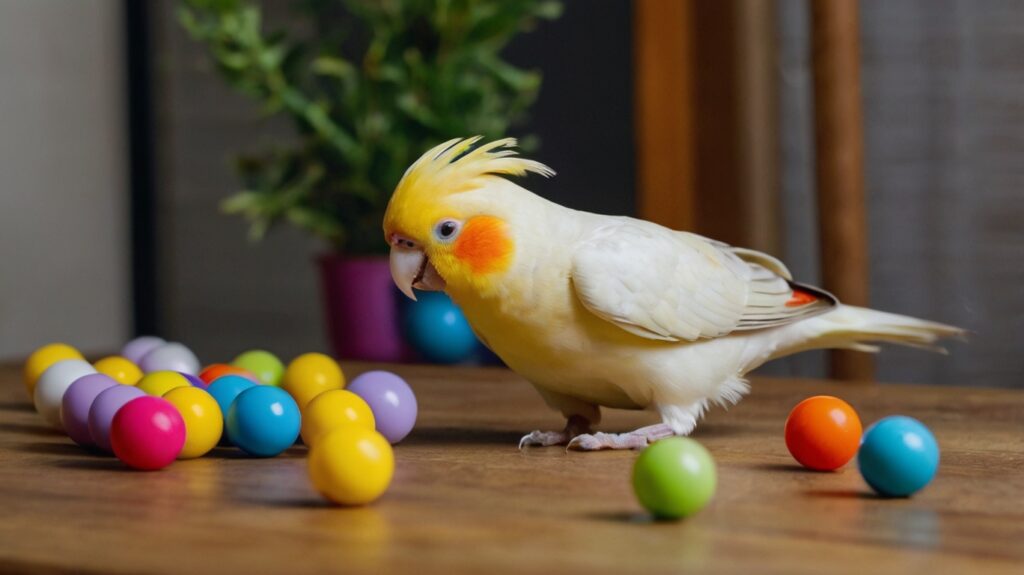
These birds can be quite playful, too. They may hop around their cage, ring bells, or investigate new toys with curious beaks. By providing your lutino pearl cockatiel with mental and physical stimulation—like puzzle toys or supervised out-of-cage time—you’ll keep them happy and engaged. You’ll notice that a bored cockatiel might become vocal, clingy, or even display signs of stress, so consistent interaction is key to a well-adjusted avian friend.
Caring for Your Lutino Pearl Cockatiel
Housing and Cage Setup
The first item on your to-do list is to ensure your lutino pearl cockatiel has a comfortable home. Ideally, you’ll want a cage that’s spacious enough for them to stretch their wings, climb around, and hop from perch to perch. Aim for a cage with minimum dimensions of about 24 inches wide x 24 inches deep x 24 inches high, though bigger is always better.
Key considerations for cage setup:
- Bar spacing: Look for cages with half-inch bar spacing to prevent your bird from escaping or injuring its head.
- Horizontal bars: Cockatiels love to climb, so a cage with horizontal bars lets them scramble up and down.
- Perches of varying diameters: Natural wood perches of different thicknesses help exercise your bird’s feet.
- Toys and enrichment: Offer chew toys, foraging activities, and swings to keep your cockatiel entertained.
Keep the cage in a well-lit, draft-free area where your lutino pearl cockatiel can observe household activities. They’re social creatures, so placing the cage near the living room or family room can help them feel like part of the action. Just ensure the spot isn’t too noisy or chaotic, as that could stress them out.
Nutrition and Diet
A balanced diet plays a huge role in your lutino pearl cockatiel’s overall well-being. According to avian nutrition experts and organizations like the Association of Avian Veterinarians (AAV), a diet consisting of high-quality pellets, fresh vegetables, fruits, and a small portion of seeds is ideal. Purely seed-based diets, while often loved by birds, can lead to vitamin deficiencies and obesity.
Here’s a quick daily nutrition breakdown in table form:
| Food Type | Examples | Serving Frequency |
|---|---|---|
| Pellets (cockatiel-specific) | Pellet blends (e.g., Harrison’s, Roudybush) | ~60-70% of diet |
| Vegetables | Leafy greens, carrots, broccoli | Daily (small portions) |
| Fruits | Apples, berries, melons | A few times/week (treat-sized) |
| Seeds | Sunflower seeds, millet | ~10-15% of diet (use sparingly) |
| Fresh Water | Clean, filtered | Available at all times |
Make sure any fresh produce is pesticide-free and thoroughly washed. Avoid avocados, chocolate, caffeine, alcohol, and other toxic foods that can harm a lutino pearl cockatiel. Always consult with a vet if you’re unsure about certain foods or supplements.
Grooming and Hygiene
In the wild, cockatiels handle most of their grooming needs themselves, preening daily to keep feathers in tiptop condition. In a home environment, you can help them maintain good hygiene by providing a shallow dish of lukewarm water for baths or gently misting them with water a few times a week. Cockatiels generally love bath time—watch them flutter their wings and have a grand old time splashing around.
Keep an eye on your lutino pearl cockatiel’s nails and beak. Overgrown nails can snag on fabric or perches, leading to injuries. If you’re new to trimming bird nails, seek guidance from an avian vet or a certified bird groomer. The same goes for beak issues—any abnormal beak growth or flakiness should be checked out by a professional.
Training and Socialization
Ready to form an unbreakable bond? Positive reinforcement is your best friend when training a lutino pearl cockatiel. Offer healthy treats or verbal praise whenever they perform a desired action, such as stepping onto your finger or calmly returning to their cage. Avoid punishment or scolding; cockatiels are sensitive, and negative reactions can damage trust.
Helpful training tips:
- Start small: Practice step-up commands daily, coaxing them onto your hand or perch.
- Short sessions: Keep training sessions between 5–10 minutes to maintain their attention.
- Consistency is key: Use the same verbal cues and rewards each time, so your bird knows exactly what’s expected.
Over time, you can teach your lutino pearl cockatiel simple tricks like waving a foot or whistling a tune. Encouraging gentle interaction—like carefully petting their head crest—helps them feel secure. Remember, these birds thrive on companionship, so even hanging out with them during TV time can deepen your connection.
Common Health Concerns
Signs to Watch For
Despite being robust creatures, lutino pearl cockatiels can be prone to certain illnesses if their environment or diet isn’t optimal. Watch for:
- Fluffed-up feathers: Sign of discomfort or chills.
- Reduced appetite or weight loss
- Runny or discolored droppings
- Sneezing, wheezing, or difficulty breathing
- Lethargy or unusual sleeping patterns
If you notice any of these signs, contact an avian veterinarian promptly. Early diagnosis is key to more successful treatment. Annual check-ups are a must to ensure your lutino pearl cockatiel stays in tiptop shape.
Respiratory Infections
Cockatiels, including the lutino pearl cockatiel, are somewhat susceptible to respiratory infections caused by bacteria, fungi, or viruses. Early symptoms often include sneezing, nasal discharge, or labored breathing. Maintaining a clean cage environment with good ventilation can help minimize these risks. Regular cleaning schedules—wiping down perches, replacing bedding, and scrubbing food dishes—are crucial preventive steps.
Nutritional Deficiencies
As previously mentioned, a diet consisting solely of seeds can cause deficiencies in vitamins A, D, and other essential nutrients. This can lead to symptoms like dull feathers, weakened immune function, and poor overall health. Ensuring your lutino pearl cockatiel has a varied, balanced diet is the single best way to prevent these issues. If you have concerns about your bird’s nutrition, consult a vet for possible supplementation.
Feather Issues
Though it’s more common in other parrot species, cockatiels can sometimes experience feather plucking or stress bars on their feathers. Overcrowded cages, sudden changes in environment, or lack of mental stimulation can trigger destructive behaviors. Keep your bird’s habitat enriching and maintain a stable routine to ensure a relaxed, healthy lutino pearl cockatiel.
Creating a Bond That Lasts
Spend Quality Time
The core of your relationship with a lutino pearl cockatiel comes down to spending meaningful time together. Carve out at least an hour or more every day to interact, whether that’s chatting, singing songs, or letting them perch on your shoulder. If you work a lot, consider providing interactive toys in your bird’s cage or rotating the environment with new branches and perches for extra stimulation.
Socialization with Other Pets
While cockatiels can get along with other birds, caution is key. Introduce them gradually, and always supervise interactions. The same goes for other household pets. A curious cat or dog might see a new bird as prey, so safety measures—like placing the cage out of reach—are non-negotiable.
Traveling and Boarding
If you need to leave town, plan ahead for your lutino pearl cockatiel. Birds are creatures of habit, so leaving them in unfamiliar surroundings without gradual adjustment can cause stress. If boarding is necessary, find a reputable facility or caretaker experienced with birds. Alternatively, consider having a trusted friend or relative come to your home to maintain your bird’s usual routine.
Comparing Lutino Pearl Cockatiels to Other Cockatiel Variations
You may come across other stunning cockatiel color variations, such as pied, cinnamon, or albino cockatiels. How does the lutino pearl cockatiel measure up? Here’s a quick comparison:
- Pied Cockatiel: Has patches of yellow and gray plumage arranged irregularly.
- Cinnamon Cockatiel: Features brownish-gray feathers instead of the normal gray.
- Albino Cockatiel: Shows pure white feathers with ruby-red eyes (also known as “White-Faced Lutino”).
The lutino pearl cockatiel stands out for its bright-yellow body sprinkled with delicate spots on its wings. When young, these pearl markings are more pronounced. Over time—especially in males—some of the pearl patterns may fade. Females, however, usually retain their pearling into adulthood.
Ethical Considerations and Adoption Options
Before purchasing or adopting a lutino pearl cockatiel, consider the following:
- Responsible Breeding: Only buy from breeders who prioritize the birds’ well-being over profit. They’ll happily provide health records and let you see their setup.
- Rescue Organizations: Check local bird rescues or shelters for a lutino pearl cockatiel in need of a loving home. Adoption can be rewarding, giving a second chance to a bird that deserves happiness.
- Time Commitment: Cockatiels can live up to 20+ years with proper care. Make sure you’re prepared for a long-term relationship.
For more information on ethical pet adoption, you can visit the ASPCA’s Adoption resources page. They offer guidance on finding reputable shelters and rescue organizations across the United States.
Step-by-Step Guide to a Happy, Healthy Lutino Pearl Cockatiel
- Select the Right Cage
- Look for at least 24” x 24” x 24”
- Bar spacing: ~0.5 inches
- Set Up a Nutrient-Dense Diet
- 60–70% pellets, 10–15% seeds, and fresh produce
- Offer Daily Interaction
- Aim for at least one hour of quality time
- Provide toys and mental stimulation
- Maintain Good Hygiene
- Weekly baths or misting
- Clean cage surfaces and bowls daily
- Monitor Health Regularly
- Watch for lethargy, fluffed feathers, abnormal droppings
- Schedule annual vet check-ups
- Encourage Gentle Training
- Use positive reinforcement and short sessions
- Remain consistent and patient
- Ensure a Safe Environment
- Keep away from drafts and toxic fumes (e.g., Teflon pans)
- Supervise interactions with other pets
By following these steps, your lutino pearl cockatiel can lead a joyful life, full of playful chirps and bright-eyed curiosity.
Incorporating Expert Insights
One study published by the Association of Avian Veterinarians emphasized the importance of environmental enrichment in pet birds, correlating regular foraging activities and puzzle toys with reduced stress and better overall behavior. Additionally, the Avian Welfare Coalition notes that a socially stimulated parrot is generally healthier and lives longer. This research underscores why your interactions, training sessions, and variety in toys can dramatically shape your lutino pearl cockatiel’s quality of life.
FAQs
1.What is a lutino pearl cockatiel’s lifespan?
A lutino pearl cockatiel typically lives 15 to 20 years, given proper nutrition and care. Some lutino pearl cockatiels even surpass 20 years with a balanced diet and regular vet check-ups. Genetics, environment, and attentive ownership all influence a lutino pearl cockatiel’s longevity.
2.How do I encourage my lutino pearl cockatiel to bathe?
Provide a shallow dish of lukewarm water or gently mist your lutino pearl cockatiel with a spray bottle. Most lutino pearl cockatiels love to splash around and groom their feathers. Make bath time consistent, and offer praise or treats to reinforce a positive experience.
3.What should I feed my lutino pearl cockatiel daily?
A quality pellet should be the cornerstone of a lutino pearl cockatiel’s diet, supplemented with fresh vegetables and limited fruit. Seeds can be offered sparingly as treats. This balanced approach ensures your lutino pearl cockatiel gets vital nutrients.
4. Why does my lutino pearl cockatiel scream or screech?
Loud vocalizations in a lutino pearl cockatiel often signal boredom, loneliness, or a need for attention. Offering toys, social interaction, and a predictable routine can minimize excessive noise. Checking for stressors like sudden changes helps keep a lutino pearl cockatiel calm.
5. Can my lutino pearl cockatiel learn to talk?
Some lutino pearl cockatiels can learn basic words or phrases, though they’re better known for whistling tunes. Regular, gentle practice may improve their talking skills. Patience and positive reinforcement encourage a lutino pearl cockatiel to vocalize more.
6.Do lutino pearl cockatiels get along with other birds?
A lutino pearl cockatiel can generally coexist with other friendly birds if introduced gradually. Always supervise initial interactions to prevent territorial behavior. Proper cage setup and patience foster a harmonious environment for your lutino pearl cockatiel.
Conclusion
When you bring a lutino pearl cockatiel into your life, you’re not just getting a pet—you’re welcoming a charming little companion with a heart full of sunshine. From their luminous plumage to their sociable and playful personalities, these birds are truly one-of-a-kind. By offering a well-rounded diet, engaging activities, and plenty of affection, you’ll set the stage for a beautiful, long-lasting bond.
Remember, every bird is unique, so be patient as you learn your lutino pearl cockatiel’s quirks and preferences. The journey is just as rewarding as the destination, so celebrate every small milestone along the way. Feel free to share your experiences or ask questions in the comments below, and let’s keep the conversation chirping!
For authoritative information on avian welfare and pet bird guidelines, the Cornell Lab of Ornithology offers extensive resources on bird health, behavior, and conservation.
If you’d like to learn more about the general care of lutino cockatiels, check out this helpful resource on lutino cockatiel.

